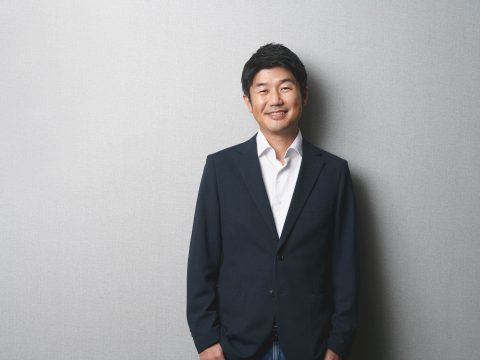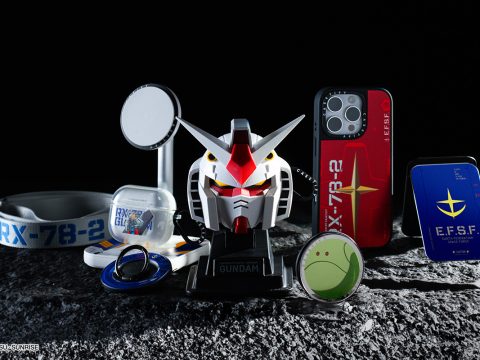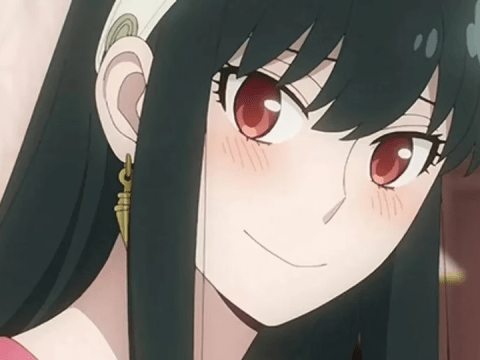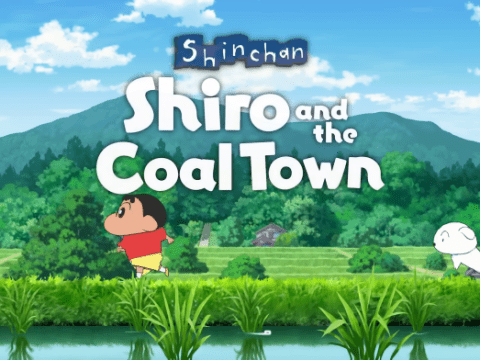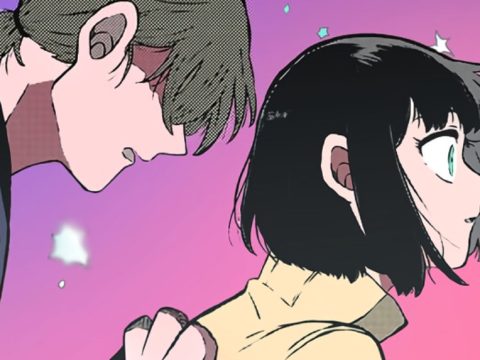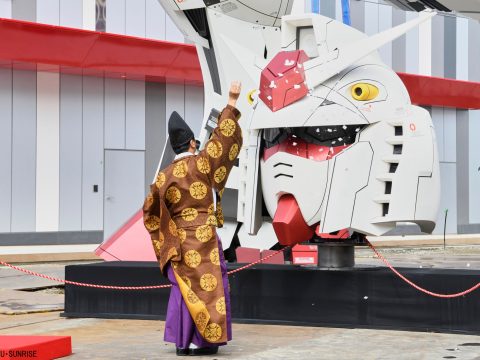
“I think our job is to take what we thought was fun when we were growing up… and pass that on to a new generation.”
In the span of his 20-odd year career, Hiroyuki Hashimoto has worked his way up the ranks, starting as a key animator on popular shows like Sailor Moon S, Rurouni Kenshin, Code Geass and Eureka Seven before transitioning to unit director and director roles on Angel Beats!, Arpeggio of Blue Steel and Spring 2014’s Is the order a rabbit?
What inspired him to enter the animation industry? How does he view his role as a creator and director? And what does he want to do going forward to expand anime’s domestic and international audiences? Read on for the answers to those questions and more in our exclusive interview:
Jason Moses: What originally made you decide to become an animator?

Hiroyuki Hashimoto: I liked shows like Gundam growing up, but I actually liked games more and was considering entering the game industry. Thing is, with games you don’t get to see your name and the names of the people who made the game until the very end, after the player beats it, but with anime you see your name every 30 minutes in the credits. That made me think anime might be a better fit. (laughs)
JM: That’s interesting. I often hear Japanese game developers cite formative experiences with arcade games or something like Dragon Quest as the big reason they considered joining the game industry. Was there any game or creator in particular that you were inspired by during that period when you weren’t sure which direction to follow?
HH: I like all sorts of games and creators in the industry. For example, I’ve always looked up to and respected Hideo Kojima, the creator of the Metal Gear series. Of course, when I was growing up games like Super Mario Bros. and its creator, Shigeru Miyamoto, were a big inspiration. They made me want to get involved with creating experiences that were fun and full of surprises.
JM: Have you worked on any shows during your career where you felt like you’d achieved that goal?
HH: Well, as an animator, being involved with Turn A Gundam was a very exciting experience. I was a Gundam fan growing up, so having the chance to work on that show was a great moment and personal achievement. But when I worked on Code Geass, that’s a moment I can definitely say was a turning point in my career and thought process in general. It was heavily supported by fans, and working on it made me realize how important the fans and people watching at home really were. It made me want to work on something that would make fans happy, and it also made me want to get to a position where I’d be able to direct something on that scale.

JM: Was there any particular show or other work that served as an inspiration to you growing up?
HH: I loved robot anime as a kid, but I don’t really have a preference for any particular genre or format as an adult. It’s not like I just want to do robots, I can find fun working on anything.
JM: But I mean, I take it you’re looking forward to Gundam-creator Yoshiyuki Tomino’s new series, Gundam Reconquista in G?
HH: I am. (laughs) I’ve only seen the trailer so far, though. A couple people I know in the industry are working on it.
JM: Do you feel jealous at all, like you want to be involved somehow?
HH: When I was just starting out I thought “well, whatever Tomino’s involved with, I want to be a part of.” But now my mindset is that whatever Tomino makes, it’s our obligation to really break it. Tomino’s almost 80 now, and throughout his entire career he really fought to make what he wanted to make. I think it’s our job as creators following in his footsteps to break whatever he established, make something even better and pave the way forward to new frontiers.
That said, I’m sure if I sat down and watched it I’d enjoy Reconquista in G regardless. (laughs)

JM: Is that what’s motivating you going forward? That kind of trailblazing mentality?
HH: I think what really motivates me is… I really want to give back to the fans. Growing up I watched Tomino and Miyazaki, and they taught me that you can discover all these amazing worlds through animation. I want to give that kind of experience to the new generation of fans, and teach them that anime has that kind of possibility and promise.
I don’t think you can stay a student forever. Eventually you have to become a teacher. So right now my job is to be the teacher and pass on what I know to the new generation of animators.
JM: At what point did you feel like you’d hit the turning point and shifted from student to teacher?
HH: It didn’t really hit home until I became a unit director. Before that, everyone around me in the same age group used to complain that old anime was way more entertaining than what we were making at the time. Now that I have a wider perspective, I don’t really think that’s the case. It’s more that people my age have experienced so many more things than the younger generations that we… it’s like we’ve seen too much. It’s not that things have gotten worse. Anime now and anime when we were growing up are the same level of quality, it’s just that our perspective changed along the way.
I think our job is to take what we thought was fun when we were growing up, add something new to it, and pass that on to a new generation.
JM: On that note, do you think the industry’s changed significantly since you started your career? In terms of attitude or spirit, let’s say?
HH: I think things have shifted from being about fun stuff to… business, for lack of a better term. When you’re talking about business, “sales” means there’s a lot of people willing to pay money to watch a show. That there’s an audience, basically. Having a big audience means having a lot of people watching what you’re creating, which is a good thing. Things work best when what that audience wants to see and what the creatives want to make align or match up in some way. That’s the best environment for creating something.

JM: Have you worked on anything recently that fits that description? Where the audience matched up with what you were trying to do?
HH: I’m not really all that into creating things that reflect my personal interests — when I’m working on something, I usually just try to think about how to make the project more fun, more in line with what the audience is demanding. You could say my mindset’s a little more user-minded than creative-minded.
JM: Where do you see the industry going in the future? Are you feeling pretty good about things? Or is it doom and gloom?
HH:
I don’t feel like it’s really all just doom and gloom that lies ahead for the anime industry. I think the way the current industry’s going, there’s going to be something that’s not popular in Japan that ends up becoming popular overseas. The industry will find its footing and thrive in its own way, but before that there’s an underlying systemic problem financially that has to be dealt with. We have to figure out how to get higher salaries for animators, for example, before moving forward.
JM: Do you think crowdfunding services are a way around that issue? We’ve seen a number of anime projects secure funding in the past few years through Kickstarter and other services (Under the Dog, Little Witch Academia), but those are mostly smaller projects as opposed to, say, full TV shows or movies. Where do you think crowdfunding fits into the equation at this point?
HH: It’s nice to have, but it’s not a fix for the larger problems in the industry. People expect much higher quality from anime productions than they did in the past, but the salaries for animators haven’t risen to reflect that. It’s hard to compensate animators for their work when the expectation is more effort for the same amount of pay. If the number of people who are willing to pay for anime increases, that could clear the problem up, but that just means we need to expand the audience.

JM: What do you think creators and the industry need to do to expand the audience? Here in America it’s probably easier now to pay for and watch anime than ever before with simulcasting, streaming services like Netflix, and so on. Is expanding the international audience the most important step, or does something else need to be done?
HH: I mean, there’s definitely been an effect on the industry from attempting to expand internationally. The distance between things are getting closer together. The distance between creators and fans, for example. But it’s been difficult to really get a sense of that for me personally, just because of how rarely I get to make the trip overseas. That said, when I was at an international convention recently, I ran into a fan that was cosplaying as a character from a project I worked on 5 years ago. The fact that there are still fans cosplaying a show like that 5 years down the line really touched me, and when I talked to them they seemed really excited and happy to have the chance to talk to someone who worked on a show they liked. That really meant a lot to me.
I’m really interested in finding out more about what international fans think about our shows. If there’s a fan event in Japan and people travel internationally to visit, that’s one thing, but I really want to know more about what the fans think from the other way around [Japanese creators visiting outside Japan]. Based on my brief experience visiting outside of Japan, I definitely got the sense that fans overseas love anime just as much as fans in Japan. I actually kinda wish there was some kind of event that aimed specifically to have fans from around the world meet in one place.
JM: Thank so much for your time.
HH: Thanks for having me!


